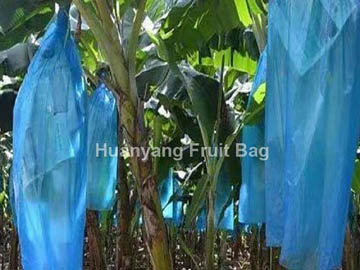Should I Cover My Banana Bunch?
Bagging involves placing a cover on the bunches to protect the fruit from damage caused by insects and other animals, rubbing against the leaves or the use of chemical products.
Banana Cover Bag
Bagging involves placing a cover on the bunches to protect the fruit from damage caused by insects and other animals, rubbing against the leaves or the use of chemical products. This innovation was attributed to Carlos Gonzales Fajardo in Guatemala in 1956, and the practice has spread to all export plantations and is considered essential to increase yields and improve the quality of the fruit.
The banana bunch covers create a microclimate that keeps the heat in and prevents cold damage. According to studies, the temperature inside the lids rises by an average of 0.5°C over a 24-hour period 3 and up to 7°C at the hottest times. This microclimate can reduce the time between flowering and harvest by many days (4 to 14 days, depending on the type of cover and environmental conditions) and increase bunch weight.
Methods
There are two types of sacking: traditional (where the cover is placed at the last horizontal hand stage, when the bracts have been shed) and early sacking (when the hands are not yet visible). The last exercise requires the removal of the fallen bracts stuck inside the cover. If not removed promptly, the advantages of early bagging will not be realized. If thrips are a problem, early bagging is recommended.
Bagging can also be associated with de-flowering, removing false hands and labelling. Other methods of bagging that can protect bunches and improve fruit quality are: double bagging, semi-early bagging and single glove bagging.

Banana Bunch Covers
Covers
Covers are usually made of 0.08 mm thick polyethylene and are perforated every 76 mm. Each hole has a diameter of 12.7 mm. The banana bunch covers are 90 cm in diameter and 155 cm long. Biodegradable covers have also been developed and tested in several countries: PLA-based covers and fully biodegradable covers that can be buried in the ground.
Polyethylene is the most common type of plastic used to cover banana bunches.The first models were low density but high-density polyethylene covers that are thinner but more resistant have since been developed. They are better suited for early bagging. They also maintain an elevated temperature for a longer period of time.
Materials
Polyethylene is the most common type of plastic used to cover banana bunches.The first models were low density but high-density polyethylene covers that are thinner but more resistant have since been developed. They are better suited for early bagging. They also maintain an elevated temperature for a longer period of time.
Perforations
The presence of holes is important to prevent fungal colonisation. In the absence of perforations, the relative humidity inside the lid is too high. The size of the holes varies: 12.7 mm per 76 mm, 8 mm per 8 mm, 6 mm per 10 cm, 3 mm or microperforations.
Thickness
The thickness of the lid does not affect its efficiency. It mainly has an impact on its cost and environment. It also depends on the local wind and temperature conditions. The thickness is generally between 12 and 25 µm. Studies report that covers over 130 µm provide better protection against the cold, but can lead to deformities and sunburn.